Proven design. Mechanically, these new Genesis F units are identical to the models I reviewed in the June 2002 Model Railroader. They have finely detailed plastic body shells with numerous hand-applied, prototype specific details, and the A units have cab interiors. The painting and lettering are first rate. Both side grills are etched stainless steel with a neat see-through effect so that some realistic internal side bracing is visible.
A Roco five-pole can motor fitted with turned-brass flywheels drives each unit. The motors are dynamically balanced for smooth performance, and a heavy die-cast chassis provides the weight that gives these models their pulling power.
Both trucks have acetal plastic gearboxes that drive all of the axles. The wheelsets are nickel silver with RP-25 contours, and they match the National Model Railroad Association standards. All of the drivers are mounted on split metal axles pressed into acetal gear tubes, so all eight wheels pick up current and transfer it to the unit’s printed circuit (PC board) through internal contacts in the truck sideframes.
In the DC mode, a 12-volt battery powers a small (15/8″ x 3¼” x ½”) radio transmitter that has six numbered buttons to control the sound functions:
1. Bell on or off
2. Sounds the horn as long as the button is pressed
3. Activates a coupling crash
4. Activates an air release when idling or a brake squeal on a moving train
5. Activates or turns off the dynamic brake whine
6. Headlight(s) on or off
These buttons are also used to program the DC sounds which offer 11 different horns, 7 bells, various bell ringing rates, 2 coupling sounds, and individual volumes. Some functions have audio confirmations of their settings.
I was surprised by some very loud and dissonant sounds when I first applied DC power to MR’s sample A-B set. However, I quickly realized that I was hearing two similar, but different-pitch horn sounds. It turned out that the two units were programmed with different horns. Each model is self-contained, so I reset both units to their factory defaults and shut off the bell and horn in the B-unit to get a much better sounding consist.
On DCC, these locomotives follow the NMRA’s recommended programming methods, including being able to program them on the main. The models use 20 functions (F0-F19) to control a wide range of common sounds, and the double-click F0 turns the sound system on or off. In addition, the system offers 37 CVs (Configuration Variables) that can be used to adjust both the sound and DCC control settings. In case of an error, the dual-mode decoder may be easily reset to the original factory default settings.
Like most dual-mode decoders with sound, this system uses more than half of the power pack’s voltage to operate in the DC mode. This squeezes all of the locomotive’s speed control into the top half of the normal throttle settings.
Operating these models on DC with the sound system is a great experience. At 6.7 volts, the sounds of idling EMD 567 diesel engines start up, and they’re just enough out of synchronization to make both of them audible. Then I turned on the bell and advanced the throttle. The diesel engine sounds revved up just before the locomotives began to move.
Once moving, a second press of button no. 1 turns the bell off. Pressing button no. 2 activates the diesel horn as long as it’s held down, making it easy to sound any combination of long and short whistle signals you may desire. Very nice.
On DCC the engine sounds started on throttle step 1, revved up as the units began moving on step 2, and reached a scale 36 mph at step 14. At full throttle the units ran 100 mph – a reasonable speed for F units in passenger service.
Our samples delivered enough drawbar pull to haul a prototype-size load of 105 free-rolling freight cars on a straight and level track.
I’m impressed with Athearn’s dual-mode F7s and the small radio transmitter that lets modelers with DC layouts enjoy sound effects that were formerly available only with DCC. – Jim Hediger, senior editor
Price: F2, F3, F7, and F9 A and B sets: $389.98 to 399.98 per set
Manufacturer
Athearn Inc.
1550 Glenn Curtis St.
Carson, CA 90746
www.athearn.com
Description
Plastic and metal ready-to-run locomotives with automatic dual-mode DCC decoder and sound
Road Names
(Various combinations of A and B units depending on the prototype): F2 A-A Boston & Maine maroon; F2 A-B B&M blue; F3 A-B Atchison, Topeka & Santa Fe passenger; F3 A-B Southern Ry; F3 A-B Union Pacific; F7 A-B Canadian National green; F7 A-B Southern Pacific; F7 A-B Pennsylvania; and F9 A-B Nationales de Mexico
F7 A and B features
Automatic dual-mode sound decoder for use on layouts with DC or Digital Command Control (DCC)
Cab interior and flush window glazing
Die-cast metal chassis
Directional, constant lighting
Drawbar pull: 7.52 ounces
Etched-metal side grills
Five-pole can motor with dual turned-brass flywheels
Individually applied prototype-
specific details
McHenry scale magnetic knuckle couplers mounted at the proper height
Minimum radius: 18″





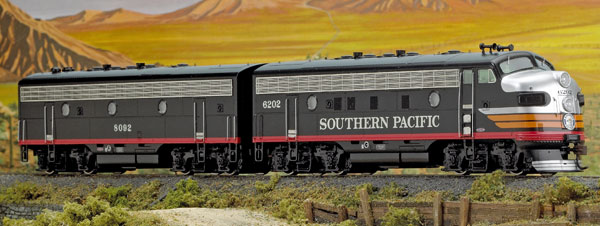
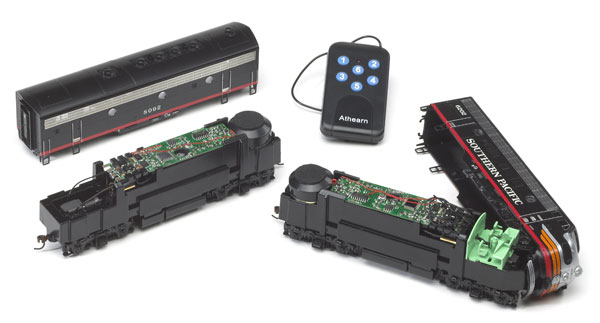
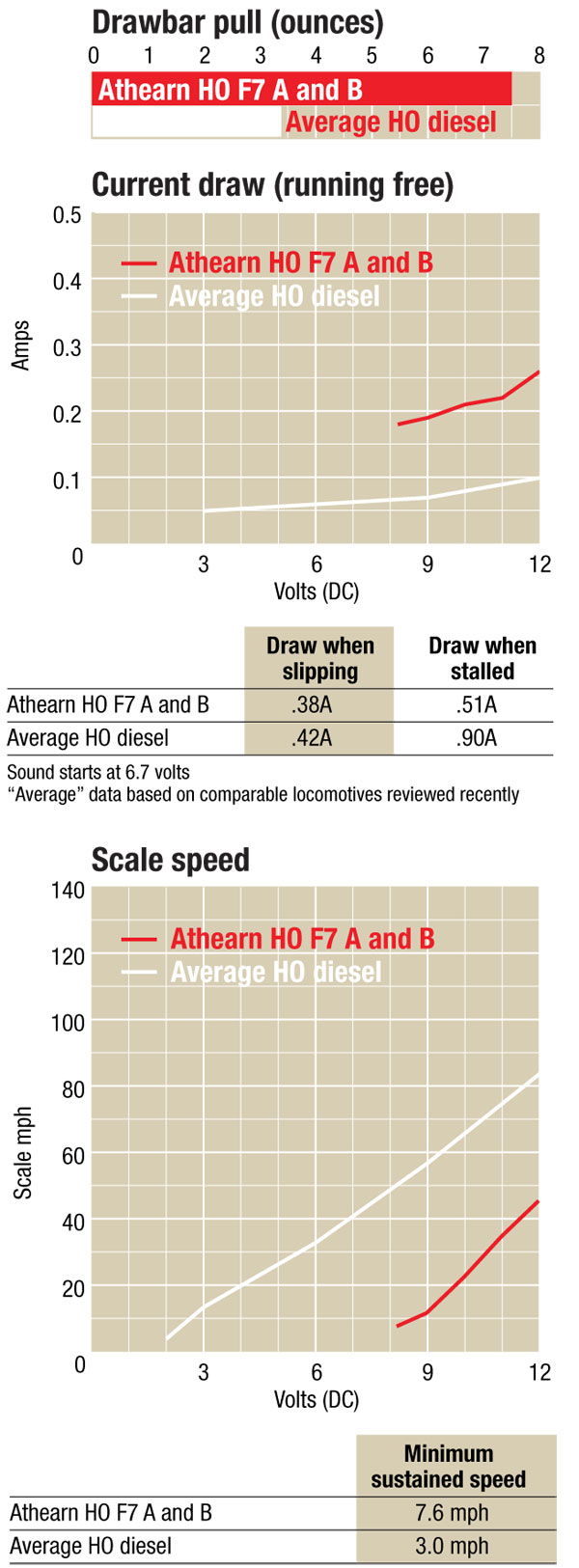

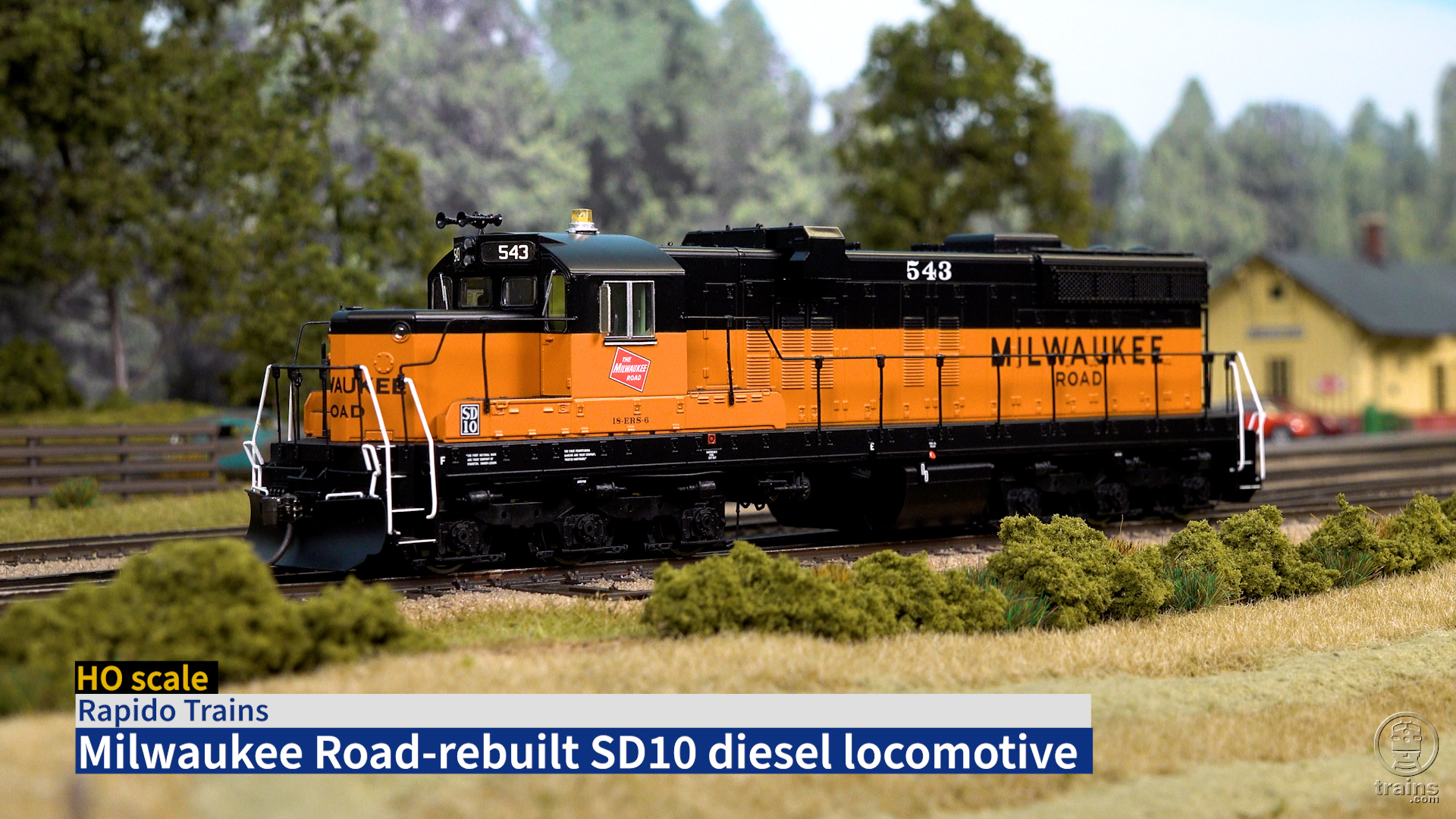
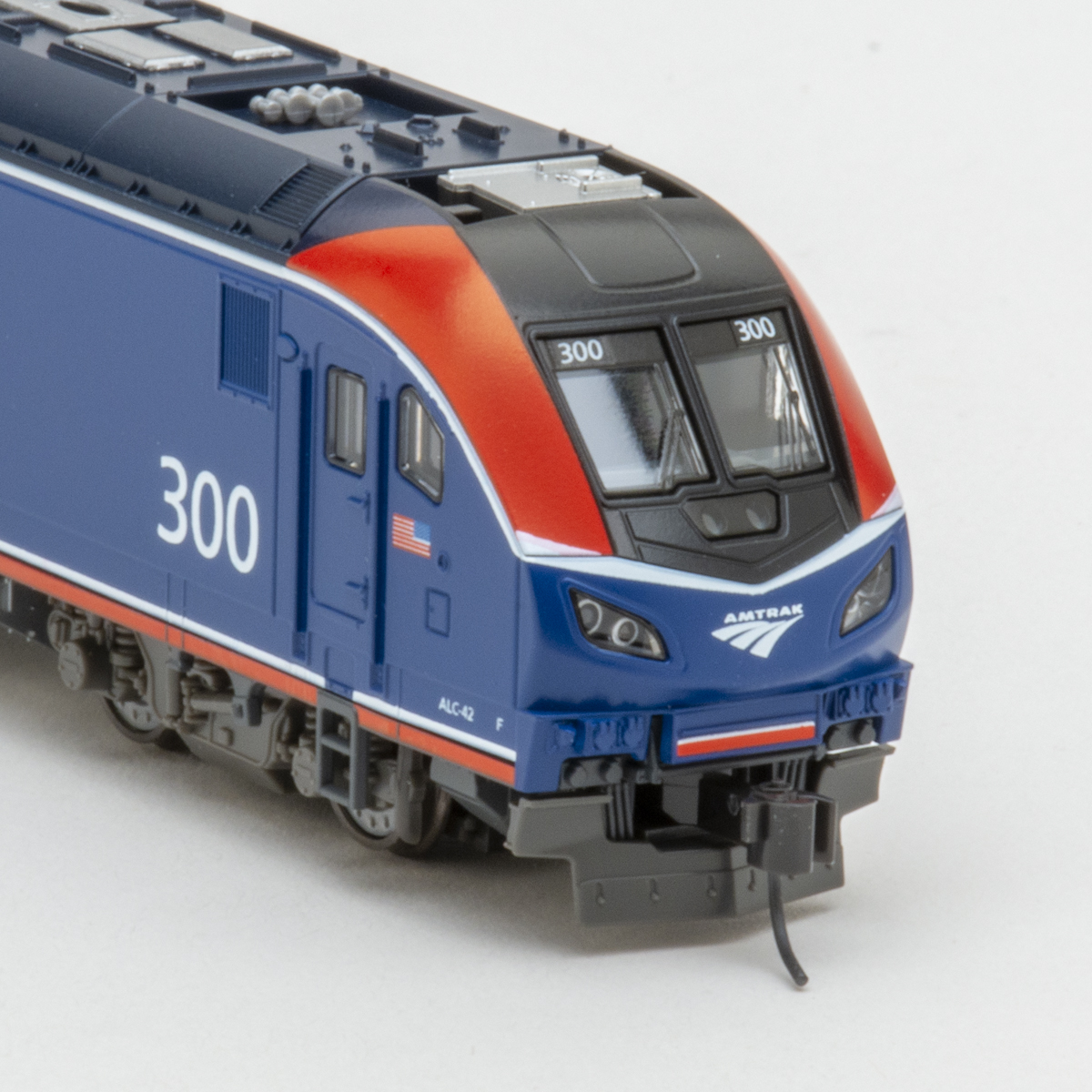
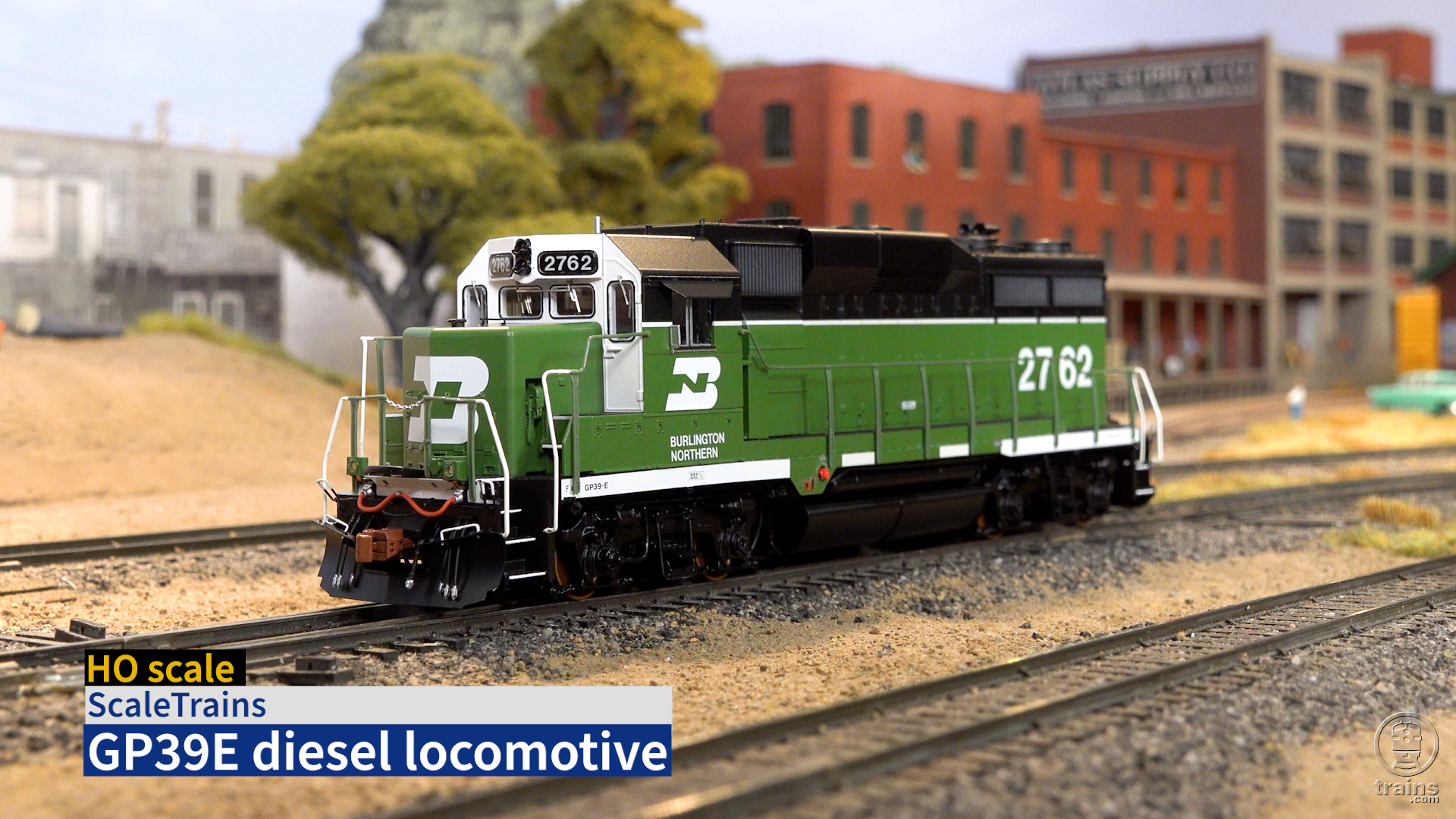
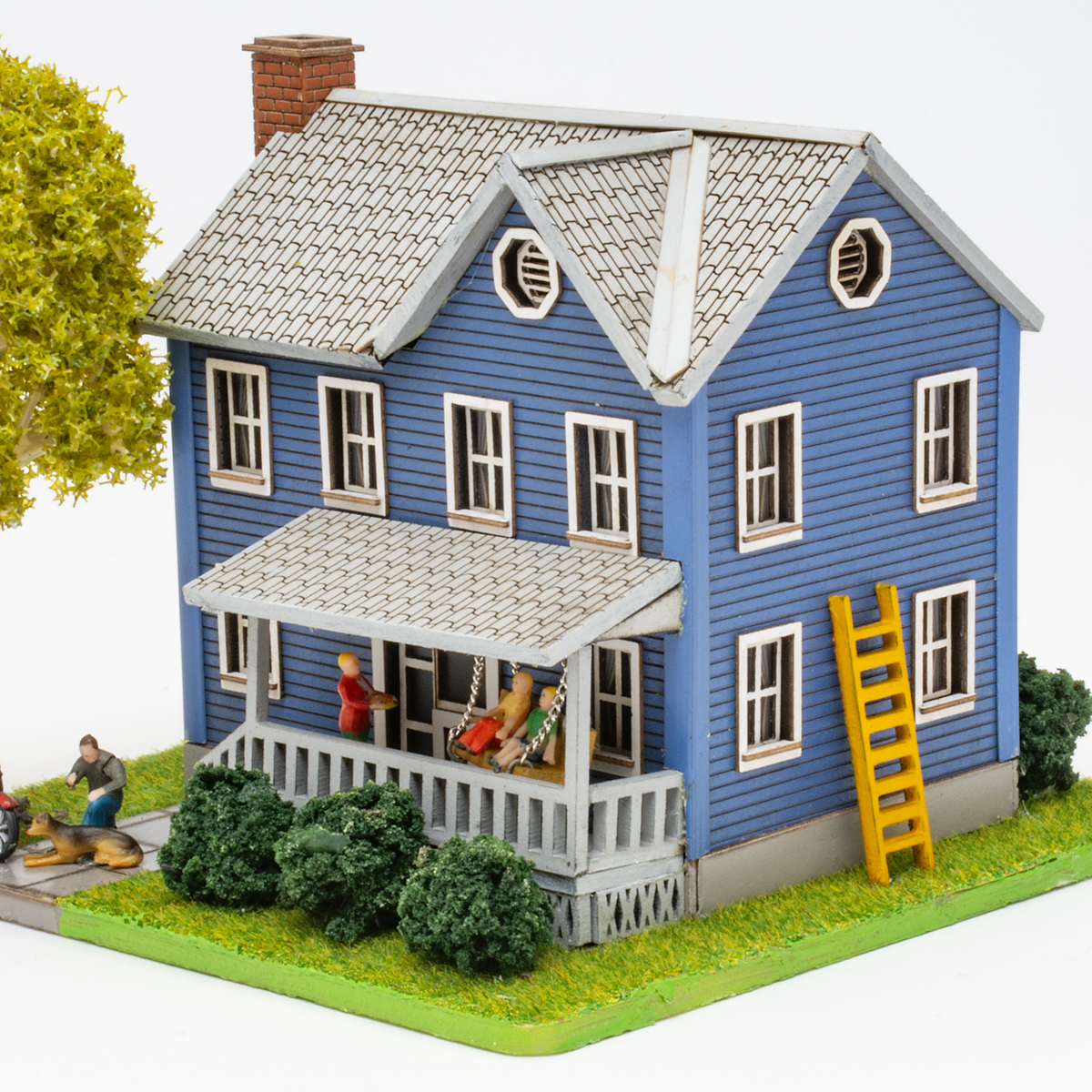




I have a dozen athern genisus f units they all are great runners but they are a chore when it comes to adding decders. The light deal and resistors seems to me is realy not dcc friendly as it could be.
This is a nice locomotive. But the decoder seems to burn up if you dont treat it well. I have my second copy already. The sound controller is handy, however. For I have a DC layout.
I obtained several F-unit Genesis sound chassis, thinking I could slide my own custom painted bodies over them. Surprise! The older Athearn bodies slide down over the chassis and keep going! I had to add shims to get the bodies to sit correctly. Seems the outside of the frame is narrower than on past models.
Overall, the sound is terrific (a little too loud), and needed to be toned down.
Other than the body/chassis problem, I would highly recommend this item.
Recently while at a hobby store i was looking at Athearn's Genesis F7s. I asked one of the employees if I could test it, and he was completely okay with that. While "testing" I was amazed by the sound and that the headlight turned on automatically. (The units were tested on a d.c. track.) I was really hoping to hear the horn and bell but the remote didn't have a battery. I rate this product 5 stars for its great performance and detail and I can't wait to add some to my roster!